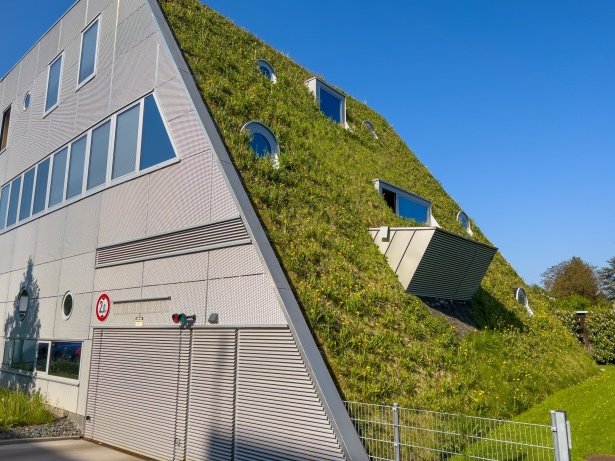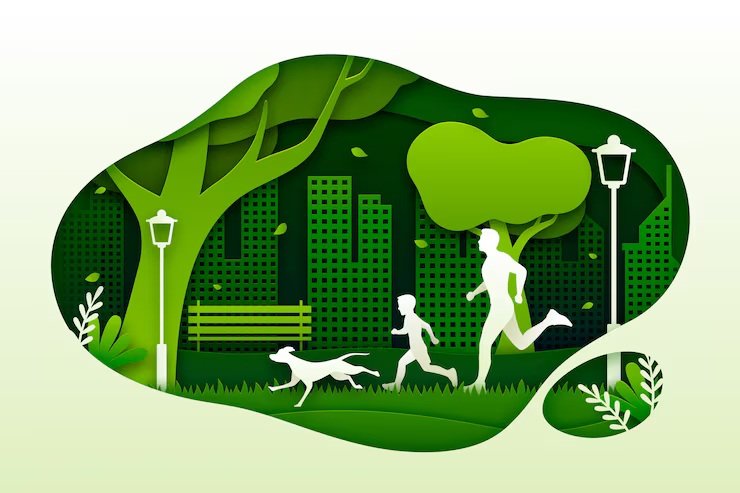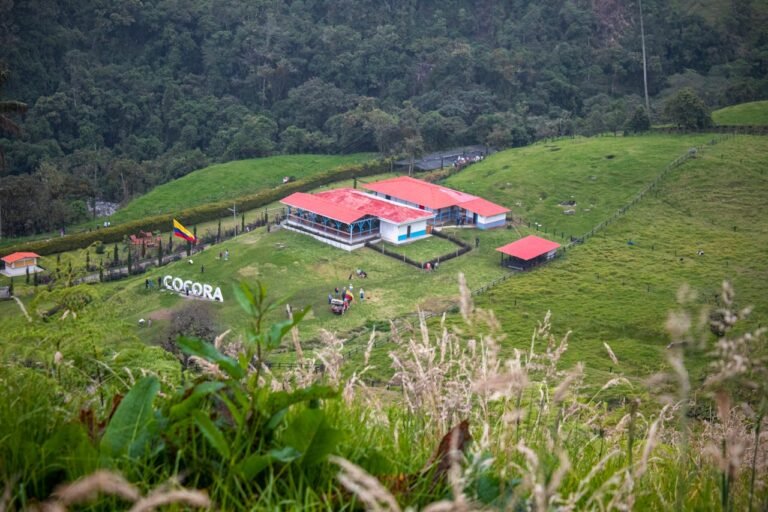Green Roofs: What they are and Why Cities are Betting on them
Green roofs are simply roofs with a layer of soil and plants on top of the usual waterproof membrane. They come in different forms — from lightweight sedum “extensive” systems that need little maintenance, to deeper “intensive” roof gardens that can host trees and people. Cities promote them because a planted roof can do multiple jobs at once: soak up rain, cool buildings and neighbourhoods, extend the life of roofing materials, and create habitat where concrete once dominated. According to the U.S. Environmental Protection Agency, green roofs reduce and filter stormwater runoff, absorb pollutants, and help lower summertime surface temperatures — making them a compact, multifunctional climate tool for dense places.
Beyond technical lists of benefits, green roofs are political and social tools. Municipal rules, grants, and demonstration projects turn private rooftops into public goods — lowering the immediate cost to owners while delivering flood control, cleaner air, and places for people or pollinators. The next sections look at three kinds of proof: real projects, scientific reviews, and practical guidance for making green roofs succeed.

Real-World Wins — Toronto, Chicago and Campus Roofs
Toronto was one of the first cities to turn theory into law. In 2009, the city adopted a Green Roof Bylaw that requires a percentage of roof area on many new large buildings to be planted, and pairs that regulation with an Eco-Roof Incentive Program that pays developers to green retrofit smaller or older buildings. A report on the city’s program shows the bylaw and incentives together delivered millions of square feet of rooftop green space and created a predictable pipeline of projects that helped a local green-roof industry grow. A city official summed up the rationale: by combining rules with money, the policy made the ecological benefits of roofs politically and financially visible.
Chicago’s City Hall green roof — installed as a pilot around 2000 — is an early, highly visible example that people still point to when discussing urban greening. The project deliberately left one half unplanted so engineers could compare outcomes. After monitoring, the planted side registered consistent temperature reductions compared with the black tar section and retained a high share of stormwater during storms while also hosting native plants and pollinators. “You can feel a difference between the two buildings in the summer,” said Kevin Laberge, an environmental engineer with Chicago’s Department of Environment, reflecting the hands-on, human scale of the experiment. According to project reports and case studies, Chicago’s demonstration helped sell the idea to other municipalities by turning abstract benefits into measurable, everyday differences.
At the smaller institutional scale, campuses and community centres are showing how green roofs can blend education and resilience. The University of Denver’s Community Commons green roof, for example, was designed not only to trim energy use and manage rain but also to showcase how living roofs can support campus sustainability goals and offer a teaching landscape. Project leads note that, beyond technical metrics, green roofs become active learning sites for students and visible commitments that reassure donors and neighbours.
What the research shows
Researchers have tested many claimed benefits, and the evidence is now substantial but nuanced. Large reviews and recent studies agree that green roofs are effective at three main things: stormwater management, thermal moderation (building-level cooling and some local air-temperature benefits), and biodiversity support — but the size of the payoff depends on climate, design, and scale.
On water, the EPA’s technical guidance and case studies show that green roofs can retain a significant share of rainfall during storms, slowing peak flows into storm systems and reducing combined sewer overflows in cities with older infrastructure. One practical estimate from municipal case studies suggests retention rates can be very high for short storms and still meaningful over an annual cycle. A report by the U.S. EPA in 2021 found green roofs are an effective post-construction stormwater best management practice when properly designed.
On heat and energy, systematic reviews published in recent years consolidate hundreds of site studies. A 2025 systematic review of thermal and energy effects found green roofs reduce roof surface temperatures, lower cooling loads on buildings, and contribute to reduced urban heat stress — particularly in Mediterranean and temperate climates where evapotranspiration is active. That said, the cooling effect at the neighbourhood scale is strongest when many roofs are planted across a dense area; a single roof helps its building and immediate surroundings most.
On social and economic value, surveys and economic analyses show people place real value on the public benefits green roofs produce. In a U.S. study, residents estimated how much they would be willing to pay for programmes that expand green roofs to reduce sewer overflows, lower local temperatures, and increase pollinators — and the implied benefits often justified public investment or incentives at the city scale. One University of Illinois-led valuation exercise found household willingness to pay could support a large expansion of rooftop greening if arranged as a funded programme.
How Cities and Owners Can Make Green Roofs Work
If you’re a city official, developer, facilities manager, or homeowner thinking about a green roof, the simplest rule is: treat green roofs as integrated infrastructure. That means three practical steps.
First, design for the purpose. If the main goal is stormwater, choose soil depth and drainage that maximise retention and connect roofs to cisterns where possible; if the priority is biodiversity and public access, design for deeper media, diverse native plants, and safe access paths. Policy and subsidy programs that distinguish between types increase the chance that the right roof is built in the right place. Toronto’s combination of a performance bylaw and targeted incentives is an example of pairing rules with finance to shape the market.
Second, plan for maintenance and monitoring. A recurring lesson from municipal programs is that installation is the start, not the finish. University researchers in Toronto and other cities have flagged gaps in post-installation monitoring: without a plan and funding for upkeep, roofs can fail to meet expected benefits. Simple monitoring — measuring runoff, checking plant survival, and tracking temperature differentials — delivers evidence that helps secure future programs and budget lines.
Third, package financial realities honestly. Green roofs cost more upfront than conventional membranes but can lengthen roof life, improve energy performance, and deliver public benefits that justify subsidies. City incentives, structural grants, and stormwater fee credits make the math work for more owners. Research and willingness-to-pay studies show the public values the less-tangible benefits (fewer sewer overflows, cooler summers, more birds and bees), and that value can be pooled through municipal financing or utility charges to scale a program.
Experts and project leads echo the same practical tone. Kevin Laberge from Chicago’s Department of Environment described the City Hall roof as a demonstration that let planners feel the difference and sell the change to stakeholders. At the University of Denver, project leads emphasise that roofs that double as classrooms or community spaces build political support and reduce the sense of maintenance as a mere cost. These human, on-the-ground perspectives help explain why some projects succeed beyond the numbers: they make the environmental logic visible and useful to people.
Actionable advice — quick checklist to move from interest to impact:
Plan the purpose (water, cooling, habitat or people), match the green-roof type, secure funding for installation and maintenance, require simple monitoring so benefits can be reported, and align incentives (stormwater credits, tax abatements, or direct grants) so private costs match public gains.
Green roofs are not a universal cure, but they are proven, adaptable, and increasingly affordable when cities pair rules with funding and when owners design for long-term performance. The evidence from case studies, municipal programs, and recent scientific reviews is clear: when done well, green roofs are a quietly powerful way to make dense cities cooler, cleaner and more resilient.







